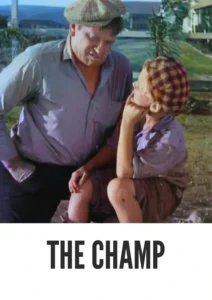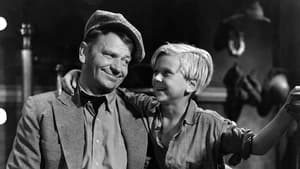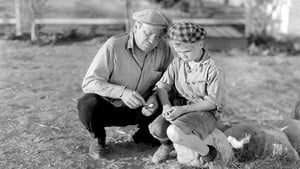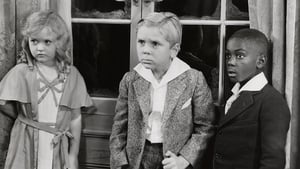Video Sources 0 Views

Download The Champ (1931) Colorized HD | Wallace Beery | Classic Drama
Synopsis
Rediscover a Father’s Love: The Champ (1931) in Stunning Color

Step into the ring with The Champ, a heart-wrenching drama classic from 1931, now beautifully colorized for a viewing experience like never before. This film, also known for its poignant story of love and sacrifice, captures the complex relationship between a washed-up boxer and his adoring son. Perfect for classic film enthusiasts and those seeking a powerful, emotional story, this HD download brings a piece of cinematic history to your screen.
Check The Full Colorized Movies List
Check Our Colorized Movies Trailer Channel
The Champ Storyline: Love, Loss, and Redemption in the Boxing Ring
Based on a story by Frances Marion, The Champ follows the life of Andy Purcell (Wallace Beery), an alcoholic former boxer struggling to make ends meet and raise his young son, Dink (Jackie Cooper). Set against the backdrop of Tijuana, Mexico, their bond is tested by poverty, Andy’s self-destructive habits, and the reappearance of Dink’s wealthy mother, who wants to take custody of him.Dink idolizes his father, believing him to be the greatest fighter of all time. He does his best to care for Andy, often acting as the responsible one in their relationship. However, Andy’s gambling and drinking continually threaten their stability. When Andy attempts a comeback to provide for Dink, he faces tough opposition, both in and out of the ring. The film reaches its emotional climax during a heartbreaking scene where Dink witnesses his father’s final fight and its devastating aftermath. Ultimately, The Champ explores themes of unconditional love, sacrifice, and the enduring power of the father-son bond.
Movie Cast
The film features a talented cast of actors who bring this emotional story to life:
- Wallace Beery as Andy “Champ” Purcell
- Jackie Cooper as Dink Purcell
- Irene Rich as Linda
- Roscoe Ates as Sponge
- Edward Brophy as Tim
- Hale Hamilton as Tony
Movie Genre
The Champ falls into the genre of classic drama, with elements of sports and family. Its powerful emotional core and stellar performances have made it a timeless classic.
Historical Context: The Great Depression and Escapist Cinema
Released in 1931, The Champ resonated with audiences during the Great Depression, offering a mix of escapism and relatable human struggles. While the film provides a glimpse into the hardships faced by many during this era, it also presents a hopeful message about the strength of family bonds and the possibility of redemption. The film’s popularity reflects the desire for uplifting stories that offered solace and inspiration during a time of widespread economic hardship. It highlights the importance of perseverance and the enduring power of love in the face of adversity.
Colorization Details
This colorized version of The Champ has been meticulously restored using modern digital techniques, enhancing the visual appeal while preserving the film’s original emotional impact. The colorization process involved carefully analyzing the grayscale tones of the original black and white footage and assigning appropriate colors to each scene. While the specific software used remains proprietary, the techniques employed included advanced algorithms for color palette selection and image enhancement. This painstaking process brings new life to the characters and settings, making the story even more engaging for modern audiences. While some may debate the merits of colorizing classic films, it introduces these films to a broader audience, ensuring their legacy for future generations.
Technical Details
- Director: King Vidor
- Screenplay: Frances Marion, Leonard Praskins, Wanda Tuchock
- Story: Frances Marion
- Cinematography: Gordon Willis
- Edited by: Hugh Stewart
- Production Company: Metro-Goldwyn-Mayer (MGM)
- Distributed by: Metro-Goldwyn-Mayer (MGM)
- Runtime: 85 minutes
Technical Specifications
- Download Format: MP4
- Resolution: HD (1080p)
- Compatibility: Compatible with most devices, including smartphones, tablets, computers, and smart TVs.
Reviews and Critical Reception
The Champ (1931) is widely regarded as a cinematic masterpiece, renowned for its powerful performances and emotionally resonant story. As The New York Times noted in its original review, “Wallace Beery gives one of the finest performances of his career.” The film’s ability to evoke deep empathy for its characters and explore universal themes of love and loss has cemented its place in film history. While some modern viewers may find the ending overly sentimental, its emotional impact remains undeniable. King Vidor’s direction is masterful, creating a film that is both heartbreaking and ultimately uplifting.
FAQs
- Q: What is The Champ about?
- A: The Champ is a drama about a washed-up boxer and his devoted son, exploring themes of love, sacrifice, and redemption.
- Q: Is The Champ (1931) a tearjerker?
- A: Yes, The Champ is known for its emotional and often heart-wrenching story.
- Q: Is this version of The Champ colorized?
- A: Yes, this version has been professionally colorized to enhance the viewing experience.
- Q: What is the significance of Wallace Beery’s performance in The Champ?
- A: Wallace Beery won an Academy Award for Best Actor for his portrayal of Andy Purcell, considered one of his finest performances.
- Q: What is the download format?
- A: The download format is MP4, which is compatible with most devices.
- Q: What resolution is the download?
- A: The resolution is HD (1080p), providing a high-quality viewing experience.
Download Now in HD!
Watch The Champ Today!












